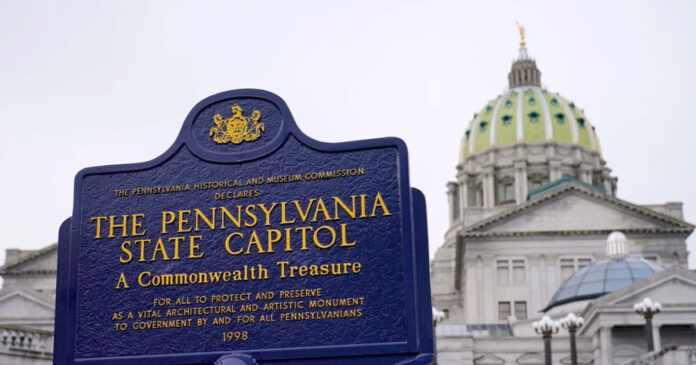
HARRISBURG, Pa. — Some of Pennsylvania’s school districts may have to empty their reserves or take out loans to open for the fall semester because billions of dollars in state aid is held up in a month-old political stalemate.
State payments to school districts normally start going out by the end of July, but the standoff between Gov. Josh Shapiro and a politically divided Legislature appears sure to stretch well into August, and perhaps beyond.
A dispute over education funding has contributed to holding up the proposed $45 billion state budget. One stumbling block is a whether to create a $100 million program subsidizing students in the lowest performing districts so they can attend private or religious schools.
In Steelton-Highspire School District, officials are discussing whether to take out a loan to ensure the district can open when school begins on Aug. 24, Superintendent Mick Iskric said.
The district has been working with a deficit for 14 years, Iskric said, and there’s no funding to bridge the gap when the state starts missing payments to the roughly 1,400-student district just outside Harrisburg.
“Our payments that come in go right out the door,” he said. “We’re impacted immediately.”
Any loan, however, will likely come with high interest rates and fees that would further compound the district’s deficit, Iskric said.
Lawmakers are not scheduled to return to the Capitol until mid-September, but Senate leadership has said they may return earlier if negotiations wrap up.
Senate President Pro Tempore Kim Ward, R-Westmoreland, said in a statement that the chamber understands it is important to finalize the budget ahead of the school year.
Counties are also anticipating stalled payments and hundreds of millions of dollars that normally go to Pennsylvania’s state-related universities are also being held up, potentially meaning higher tuition.
Education funding became one of the thorniest parts of the budget process after a landmark court ruling said the way Pennsylvania pays for public schools violates the rights of students in the state’s poorest districts.
The proposal to subsidize private or religious school tuition for students in the lowest performing districts advanced in the Republican-controlled Senate, which found an ally in Shapiro. But Democrats who control the House opposed it,after pushing unsuccessfully for more public school funding for Pennsylvania’s 500 school districts.
The state will miss its first payment to schools, about $190 million earmarked for special education, at the end of July. A delay past mid-August means districts will miss the first portion of their basic education funding, $1.1 billion, which typically is delivered at the end of that month.
About $40 million in federal funding — which supports the state’s poorest districts, after-school programs, migrant education and more — typically starts flowing this month. Those dollars are also snarled in the budget impasse.
Districts that have to take out loans to bridge a funding gap may be able to pay off the debt when the state starts making payments, but they will still be on the hook for interest and fees, Iskric said. That happened in 2015, when a drawn-out budget feud left districts scrambling to cover costs.
The previous stalemate showed why it is important for districts to maintain enough money to plug holes when state funding stalls, said Susquehanna Community School District Superintendent Bronson Stone.
Stone’s is among Pennsylvania’s poorer districts and gets a majority of its funding from the state. It has built enough of a reserve in recent years to get through October, he said.
“If it lasts beyond October, then we’d have to reconfigure finances and look for possibly some support, whether through borrowing or things along those lines,” he said. “I’d hope it wouldn’t last that long.”
Hazleton Area School District can make it just about two months given its $6 million biweekly payroll, said Superintendent Brian Uplinger.
The impasse could have a nearly immediate impact on pre-K programs and daycare, plus an early intervention program for all Luzerne County families who have children with special needs.
The district would begin considering borrowing in November, Uplinger said. Before that, programs like athletics and extracurriculars could see cuts to make ends meet.
“Everything we do is for our students. We want to make sure they’re getting the best and most they can while they’re with us,” he said. “If we’re not getting funded appropriately, or at all, our programming suffers and then they suffer.”






